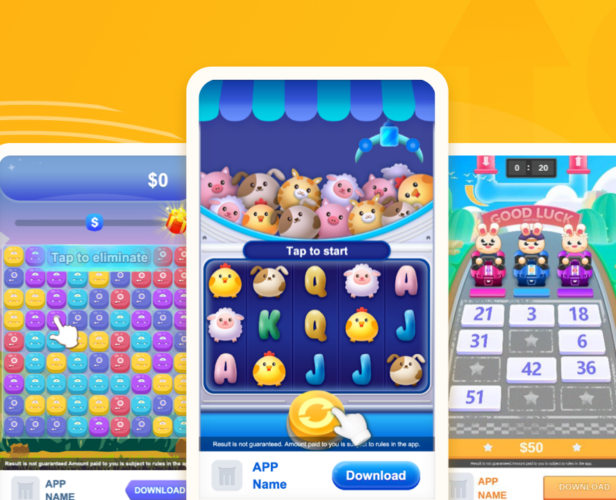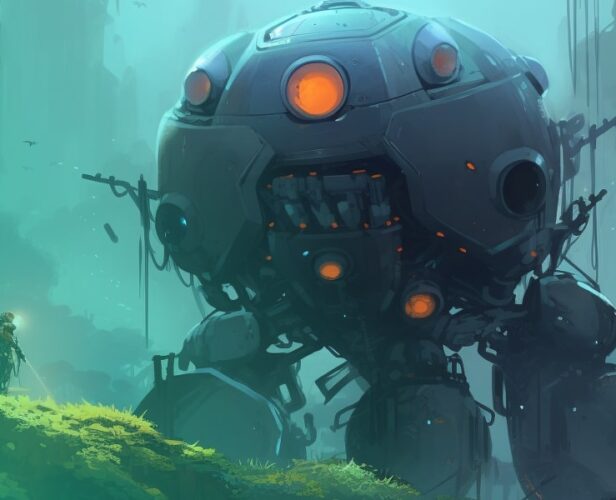Resources > All
Insights and tips about the games industry
Subscribe for gaming insights, industry reports and product updates delivered straight to your inbox.
#Game Deconstructions
Publishing Like a Pro: GameFam Spotlight
Roblox has been blowing up over the last couple of years. Having initially launched back in 2006, the social gaming platform now boasts over 30 million games (what they call experiences), 52 million daily active users, and over 12 million creators worldwide. Recently, we’re starting to see more and more hit games launching on the Roblox stores – with one particular publisher shining bright in the ocean of Roblox devs: GameFam. Despite only founding the company in 2019, they’ve worked with a range of Roblox developers and helped publish over 30 successful titles on Roblox. So what’s their secret? How do they help these developers stand out? We’ve reviewed three of GameFam’s top published games: Twilight Daycare by Night Studio, All Star Tower Defense by Top Down Games, and Car Dealership Tycoon by Foxzie. Each one of these boasts over one...
#Case study
Trihex Studios: delighting 40M players with analytics
GameAnalytics gave a voice to Redcliff’s silent majority Eric and Tae discovered early on that most developers can end up only listening to a few very vocal players. But those players often aren’t representative of the entire player base. For one, over half of Roblox’s players are under 12 years old. Not exactly the sort to engage with a developer or fill out an online survey. In fact, under most privacy laws — a developer isn’t even legally allowed to collect that information, as it could reveal personal information about a minor. “It’s not the user’s responsibility to tell you what they want, though,” Eric explained. “It’s our responsibility as developers to figure out what the player wants and needs in the game. But you need to be careful. It’s very easy to set up a Discord server and get...
#Game Design
6 (more) narrative techniques to make better games
In our last article, we covered the three major C’s of storytelling: character, conflict, and change. Using these rules will set the foundation of your game’s narrative. But that doesn’t mean your work is done. There’s so much more to building a strong narrative. And in part two of our storytelling series, we cover six narrative techniques you can use in your titles to help boost your storytelling and character development. Let’s get to it. 1. Consider a shared story You might not want to go into a huge amount of detail for every game you create (especially if you’re working with hyper-casual or casual titles – which have notoriously short lifespans). While it would make each game unique, it can take a lot of time. Instead, think about whether you can create a single story that all your games tie...
#Ads & Monetization
Top 10 Hyper-casual Game Ad Networks in 2022 (Q3)
Editor’s note: This article was written and published by Tenjin. You can find their original version here. We have released our “Hyper-Casual Benchmark Report” for Q3 2022. In this report, you’ll gain exclusive insights on ad spend and CPI on a country and platform level. Additionally, we have partnered with GameAnalytics to bring you a Day 1 and Day 7 retention benchmark. Here is a full list of what you will find in the report: Top countries by ad spend and CPI Top ad networks by ad spend and CPI Day 1 and Day 7 retention for the top 2% of games by platform (by GameAnalytics) Here is a sneak peak from the report… Tenjin data from Q3 2022 shows that Brazil is the biggest outlier in the report with very low CPI (0.06 on Android, and 0.14 on iOS) relative to...
#GameAnalytics Updates
Improving funnels processing from ~20 mins to seconds
Editor’s note: we recently shared details of a major GameAnalytics update which includes a substantial overhaul to our product and infrastructure. Check it out for more context. At GameAnalytics we have been using Apache Druid and Imply (Imply.io) for over four years to power our analytical backend, allowing us to achieve a responsive frontend experience for our users. This is due to the low latency querying that Druid enables through the usage of approximation algorithms. Recently we had the opportunity to present the work behind our Druid implementation in the BigDataLDN 2022 event, where we covered our new funnels feature and the usage of the Theta Sketch algorithm from the Apache DataSketches library (https://datasketches.apache.org/). Here’s a recording of the talk. Enjoy!
#GameAnalytics Updates
Our Open Beta has landed
What’s going on? If you missed it before, we recommend that you check out this post we shared a few days ago for more context: GameAnalytics is changing… As promised, we will now deliver more detail on the Open Beta. We’ve included a video introduction and also a list of all major features describing what functionality is delivered initially and what additions to expect over the following months. See it in action In this video, Kasia from our product team gives a detailed overview of all the new functionality available in our Open Beta. It covers all key features — please give it a watch to get the most out of this update! What is the Open Beta? The Open Beta is a period of time when a new and separate version of GameAnalytics is available whilst features are being...
#Game Design
Reaching a +40M playerbase: advice from Trihex Studios
Unless you’ve been living under a rock for the last few years, you’ve probably heard of Roblox. It’s a gaming platform with over 30 million games – which they call experiences – 52 million daily active users (DAU) and 12 million creators at the time of writing. One of the keys to its success is that it makes it exceptionally easy to create and release games on its platform. We spoke with Tae Kim and Eric Park, co-founders of Trihex Studios and the minds behind Redcliff City – one of the most popular titles on Roblox which has, this year alone, amassed a community of more than 40 million unique players. During our conversation, we asked them what mobile developers could learn from Roblox and how they could make the move over to the platform. Here’s their advice. First up,...
#Game Design
Improving your mobile game with narrative (Pt 1)
What comes to mind when you think about narrative design? You probably imagine Bioshock, Mass Effect or even Stanley Parable – story-driven games where the player’s choices affect the ending. How could you possibly incorporate any of that into a mobile game? But narrative design isn’t just about branching storylines and giant flowcharts. It can actually be a lot more subtle. Narrative design is about creating a consistent narrative. It’s not just about telling a story, but about showing it in your mechanics, user interface and prompts. It’s the small snippets of audio, item descriptions and visual iconography. Narrative design is about deciding what your story is and making sure that you’re staying consistent with that larger vision. In this article, we’re going to explain the basics of a good story and then talk about a few ways you can...
#Ads & Monetization
How MondayOFF increased IPM by 57% with playable ads
Editors note: This article was originally written and published by Mindworks, a leading self-service creatives platform from Mintegral. You can find their original version here. Mindworks is giving GameAnalytics users exclusive trial access to create countless playables and advertise them for free with Mintegral. Hurry, this amazing offer is for a limited time only. Activate your free Playturbo trial The success of playables in Asia In Japan and South Korea, where banners and video ads dominate, the emerging playable ads have significantly changed people’s perception of ads, thanks to the immersive, highly interactive ad experience they provide. At the same time, these playable ads are also helping the games break out and make a splash on the global market. According to UA data from Mintegral: Playable ads increase IPM by over 85% on average in Japan and Korea, and 40%...
#Game Deconstructions
6 games that successfully layer in meta mechanics
As we’ve mentioned before, the hyper-casual market is being forced to change. With more competition, higher CPIs and tightening margins, developers need to increase their retention if they’re going to continue making money, now more than ever. And to do that, they must layer more mechanics and elements into their games. We’ve explored how and why developers can – and should – shift from hyper-casual to hybrid-casual. But if you’re still struggling to see how that might be possible, let’s look at a few games that have used meta mechanics to make their game more engaging. Here are six games that have a short, simple and satisfying core loop, but have layered in meta features to increase their retention. Let’s dive in. 1. Archero: How to add progression systems well Developed by Habby, released 24th March 2019. This was one...
#Ads & Monetization
Boost your user acquisition with free playables!
Editors note: This article was originally written and published by Mindworks, a leading self-service creatives platform from Mintegral. You can find their original version here. Mindworks is giving GameAnalytics users exclusive trial access to create countless playables and advertise them for free with Mintegral. Hurry, this amazing offer is for a limited time only. Activate your free Playturbo trial What’s the deal with playables? Playable ads have quickly become one of the most popular ad formats among apps and brands due to their premium user experience, accessibility, and superior conversion performance. And while playable ads are effective, they are typically expensive and time-consuming to produce, posing a significant challenge to scalability. It’s for this reason we’ve launched the Playable Ad Editor on the Playturbo platform. The Playable Ad Editor now provides advertisers with a zero-coding, drag-and-drop online editor to easily...
#Game Deconstructions
How Stumble Guys hit 225m downloads
It’s no secret that Stumble Guys is heavily influenced by Fall Guys. When Fall Guys came out in 2020, it had many clones. But none of them stuck. And none of them even touched the amount of success that Stumble Guys achieved over the last few months. So what makes Stumble Guys different? Well, Kitka Games spent a lot of time polishing this title, layering in a range of social and meta-features to keep players engaged. Despite its rocky start (it only had a few thousand players for more than a year after it first launched), it’s now one of the top games on the app stores, with over 225 million downloads and $40 million in revenue. Not surprising then, that it’s claimed the number one spot in the charts for several weeks running. But how was Kitka Games so...
#Game Design
Six features that turn a hyper-casual dud into a hybrid-casual hit
Cracking the hyper-casual market is more challenging than ever. Why? Quite simply, there’s too much competition. This simultaneously drives up the cost of getting new players and makes it easier for players to churn. And that’s particularly problematic because – with higher acquisition costs – studios need higher retention rates if they’re going to make a profit. But a new genre has emerged: Hybrid-casual. Studios have realised that if they’re going to keep retention high, they need to layer in more features and aspects of meta-game. The tact is to keep the core gameplay short, simple and satisfying, but add meta-features that encourage players to keep coming back. Features like progression systems and collectibles that add more depth to the core game. (You can read more about why the shift is happening in our other post on the topic.) In...
#Editor's pick
Game data pipeline: Building vs buying
As a large number of studios, publishers, and game developers are heavily relying on data to guide their decisions, they need to decide between building or buying. But which one is more efficient? To assist you in understanding the Total Cost of Ownership (TCO), we broke down the following key considerations: Setup requirements Cost calculation Team needs and recruitment
#Editor's pick
Mobile gaming benchmarks for Q1 2024
Uncover the industry’s performance with Q1 2024 benchmarks. Explore key metrics like retention rates and session engagement to benchmark your games against industry standards. What’s inside? Retention benchmarks for casual, classic, and mid-core games Session length benchmarks for games launched in North America, Europe, the Middle East, and Asia Session count benchmarks across 15 game genres
#Editor's pick
Grow your revenue with Xsolla Web Shop for Mobile Games
“Xsolla anticipated this seismic shift earlier this year, when we launched multiple products that are being actively used by some of the world’s largest game companies to increase profit and build closer relationships with their mobile and pc players. We’ve now combined these products and learnings into an elegant new solution called Xsolla Web Shop for Mobile Games,” said Chris Hewish, President of Xsolla. Through Xsolla Web Shop for Mobile Games, developers can expect significant revenue growth and can reach new players in new geographies previously unavailable to them. This solution solves many challenges developers face; such as discoverability, declining profit margins, lack of control over the user experience, access to localized payment methods, cross game marketing, more efficient user acquisition, effective collaboration with creators and influencers, and much more. Three industry-changing announcements make this opportunity more timely than ever:...
#Editor's pick
2023 Roblox report: Behind the data with GameAnalytics
Download a comprehensive report of Roblox player behavior and game performance based on GameAnalytics data from 2023. This report highlights critical benchmarks and insights to help Roblox creators optimize their games. What’s inside? Devices analysis Players’ daily session frequency Average revenue spent per user Session length and count benchmarks Retention benchmarks Revenue benchmarks
#Editor's pick
The Game Developer’s Handbook to Mastering Data Solutions
Data is the key to success in the ever-evolving landscape of game development. Explore this guide to transform your data into insights using our turn-key data solutions. What’s inside? Our comprehensive guide explores cost-saving strategies and real-world applications for advanced use cases. Learn how to seamlessly integrate data sources, unlock detailed player insights with Player Warehouse, access real-time data with Raw Export, and ensure data privacy compliance.
#Case study
Developing a #1 VR MMO: Ramen VR’s Journey with GameAnalytics
Discover how Ramen VR used data-driven game development to launch "Zenith: The Last City", which became the #1 bestselling game all major VR platforms—including Meta Quest/Rift, Steam and PlayStation VR.
#Editor's pick
Using AI to Supercharge Your Game Art Design
Discover how tweaking AI tool settings can help you generate varied art styles, produce better concepts, and speed up the process from prototype to final design. With AI on your team, creating unique game art has never been easier or faster.
#Editor's pick
Event Design & Tracking Guide for GameAnalytics
Learn how to create an adaptable tracking plan, enabling you to unlock richer insights and maximize the value of your data within GameAnalytics.
#Editor's pick
How studios use DataSuite to find hit games
Learn how successful publishers evaluate hundreds of games per month, to find the next hit game.
#Editor's pick
Among Us VR dev talks about how to create immersive worlds
VR is all about immersion. It’s about allowing players to lose themselves in more than just a game, but a new world. You have to build VR experiences the right way to make this happen. This goal is always top-of-mind for Schell Games. In this interview, we spoke to Schell Games’ Vice President of Product, Charlie Amis, to learn their story. “For VR, you want to make the player feel like they’re actually in the world you’ve created. This isn’t as true or a high priority in PC and console games. If people start to lose that sense of presence and immersion, then a lot of the reason they put the headset on is hurt. They want to go to another world or be someone new. So you need to help them feel like they’re really there and really that...
#Editor's pick
GameAnalytics H1 Update: New Product Improvements!
It’s been a busy time since February, when the largest update in GameAnalytics history was launched. Read on for more information about what’s changed recently, and new functionality coming to the platform very soon.
#Case study
How TapNation uses DataSuite to increase the LTV of 19 hit games by 50% in only 6 months
Smashing obstacles with Giant Rush While they’ve seen huge improvements using DataSuite across their portfolio, one game stands out in particular: Giant Rush. (And not just because the character is huge.) The title has now reached over 140 million downloads. And, through a series of A/B tests and insights from the data they collected, they’ve been able to increase the LTV by a whopping 200% over six months for this specific title. “It’s because we A/B test every day,” Philippe Grazina from TapNation says. “We ask questions like: When are players leaving the game? For example, the boss in Giant Rush. If we spot that they’re leaving at the same point every time, we know we need to make a change. Small details like that really help.” Through these granular insights, TapNation can iterate and improve on their game step...
#Editor's pick
How to Build a Data Warehouse for Games from Scratch
Over our last couple of blogs around data warehouses, we’ve explained how they let you analyze data from across your portfolio and look at what insights you can gather from them. Now, we’ll dive into how to build a data warehouse. What steps do you need to take and what resources will you need? To figure this out, we’ve rounded up the costs, steps, and tools we think you’ll need to get started. Please note, that we haven’t included the cost of running an engineering department (which you’ll need), which can end up being a lot of $$$. What do I need to get started? Before you start, you’ll need to ensure you have the right people. You’ll likely need a software or data engineer, and perhaps an architect or DevOps engineer. You’ll also need to budget for tools like...




























